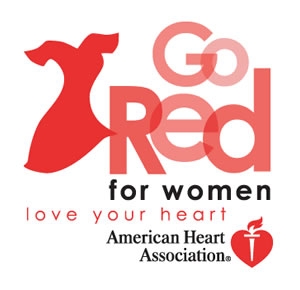For this last day of American Heart Month, I present a health story.
One year ago, I found out I had high blood pressure. I was 31.
I had gone to my church’s fellowship hall after service for a special Women’s Heart Health Day. I had no interest in the blood pressure screenings—I wanted the free, healthy snacks and recipes they promised—but one of the nurses said, “Please get your blood pressure checked while you’re here. Hypertension is called ‘the silent killer.’â€
When I had last seen my doctor in November 2011, my blood pressure was around my normal 100/65. That Sunday morning, it was nearly 200/200, and I don’t praise the Lord by running around the church.
On my way home, I decided not to worry. Not because I prefer God’s healing hands to modern medicine, but because I knew I could do nothing about it. I wore a size eight, combined cardio exercise, weight training and yoga six days a week for at least 60 minutes. About a third of my meals each week were vegetarian, I had loved whole wheat bread since I was a child and had long had an odd aversion to salt.
I had been making the right health choices for years, and it irked me that I couldn’t dodge the problem that affects black women at such high rates. For all my healthy living, I couldn’t fix my stress. In 2011, I moved back home with my mom after three years without full-time employment. The year ended with a battle over an assistantship between me and the chair of the graduate program I had been accepted into. I’m not sure who won, but I postponed admission for the second time. I began 2012 looking at yet another six to eight months at home and supplementing my sporadic freelance writing income with two part-time gigs. I would eventually have my hand in seven different jobs.
The U.S. economy and healthcare system would have had to have changed for my stress to decrease. If fixing my blood pressure was going to be costly—and between my $5,000-deductible PPO plan (cost: $90 a month paid 100 percent out of pocket with no subsidy from an employer) and unsteady income, every office visit that wasn’t for a pap smear was costly—I couldn’t afford to address it anyway. I didn’t think for one second it was heart disease (I couldn’t have been as active as I was with a bad heart, and my heart rate was always in a normal range, even with high blood pressure), but it could have been a symptom for another serious disease, like lupus, which affects black women at three times the rate of white women. But to worry about my hypertension could make it worse.
One of my best friends, a doctor who lives too far away for me to get free treatment, scared me into going to my doctor. She said, “When I have patients with blood pressure readings like yours, I send them to the ER because they’re about to have a stroke.â€
The first medicine my doctor prescribed doesn’t work on black people. Seriously. She switched me to a calcium blocker that tends to work better in African Americans. It eventually decreased my blood pressure, but after using it for about six months, it also thinned my hair to a point that made my hair stylist gasp, “I didn’t know things were that bad.â€
I found full-time work in January and have had employer-sponsored health insurance for about one week now, but for too many black women, things are still that bad. Millions of black women don’t have health insurance. Sequestration is threatening our national economic recovery and may close healthcare centers. I was living at home due to prolonged unemployment, but I wasn’t there taking care of a sick mother, children (I don’t have any) or extended family, and putting everyone else’s needs before mine. I don’t face the prolonged stress of living in a neighborhood impacted by decades of economic neglect, environmental racism, get tough on crime measures and their resulting hopelessness and violence. An estimated 23.5 million Americans live in food deserts, and most of those people are poor people of color living in urban areas.
That’s why I also get irked when I read articles like this making recommendations for black women to prevent heart disease. (“Find a Workout Buddy†at your affordable gym or neighborhood you feel safe jogging through. “Take a list of questions when you see your doctor for your annual checkup,†because every woman can afford preventive care and goes to the doctor every year.) We have to put these recommendations into context. Heart disease and heart health develop through a combination of personal choices and structural limitations. I’m going to do what I can to be healthy; all women should. But to prevent millions of deaths, we have to attack the larger structures at work.

